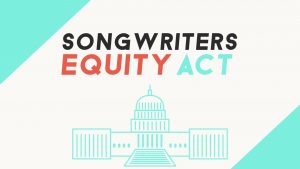As part of our ongoing Music Publishing 101 series, let’s turn our attention to the mechanical license rates. In a prior post,  we described the ins and outs of mechanical licenses. This time it’s all about the dollars. Well, mostly it’s about the pennies. Check that. It’s actually about the micro-pennies. Yes, there is such a thing and they’re not just for gas stations. As we start our dive let’s look at single song downloads sold in 2015. There was roughly $109 million in mechanical license revenue for songwriters and publishers. Not too shabby, right? Well those same single songs generated $1.2 billion overall for the recorded music industry (record labels). Wait, what? Welcome to the la-la-land of mechanical royalty rates!
we described the ins and outs of mechanical licenses. This time it’s all about the dollars. Well, mostly it’s about the pennies. Check that. It’s actually about the micro-pennies. Yes, there is such a thing and they’re not just for gas stations. As we start our dive let’s look at single song downloads sold in 2015. There was roughly $109 million in mechanical license revenue for songwriters and publishers. Not too shabby, right? Well those same single songs generated $1.2 billion overall for the recorded music industry (record labels). Wait, what? Welcome to the la-la-land of mechanical royalty rates!
What are the mechanical rates for downloads and CDs?
It varies depending on whether a listener is going to own the song or stream it. In the ownership camp, things are fairly straightforward. For songs under 5 minutes, the current mechanical rate is 9.1¢ per song for permanent digital downloads, CDs and vinyl. In case you’re wondering, it’s 1.75¢ per minute for songs over 5 minutes (take note that it is 1.75 cents). For album formats like CDs and vinyl, you would simply multiply the number of songs on the album by 9.1¢.
What are the rates for streaming?
The rates for streaming are determined by seemingly complicated formulas. Basically, the formulas for calculating mechanicals from the various types of streaming services all follow similar calculation paths. By way of example, the current formula for subscription services accessible on mobile devices (i.e. Spotify on your phone) is:
- Calculate the all-in royalty pool by selecting the lesser of: a) 80¢ per subscriber per month or b) 21% of the payment the service makes to record labels, and then selecting the greater of that selection versus 10.5% of a music service’s revenue.
- Next, the payable royalty pool is calculated by separating out mechanical royalties from performance royalties within the all-in royalty pool and then selecting the greater amount from the mechanical royalties or 50¢ per subscriber per month. This prevents the songwriters/publishers from being paid below the minimum amount.
- Then divide that payable royalty pool by the number of plays to determine the royalty amount per play. Typically, this royalty amount per play has numerous zeros after the decimal point before seeing an actual number. A fun number like $0.000045 is not unheard of. See, gas stations don’t own the market on using micro-pennies.
Are we finished? Like Vizzini in The Princess Bride (“never start a land war in Asia”; yes, his name is Vizzini! #trivia)….not remotely! Those cents and percentages all vary according to how the music service delivers music to the listener. Does the service offer itself on mobile like Spotify? Can the music be streamed only while online or can the user play music offline? Is the service pre-installed on new phones? And what about a free ad-supported service? Answers to these questions guide the royalty calculations. To really dig into the minutia that differentiates the formulas between types of digital music services, explore the Harry Fox Agency’s (the mechanical collection society) infographics HERE.
What’s the key takeaway about streaming?
The key takeaway for streaming is that many of the math calculations are based on number of subscribers (either the number of subscribers or the subscription revenue total). This is why music publishers, and even labels for that matter, get upset when streaming services don’t have an effective plan to convert free users to paid users. Performance royalties, which are also paid from streaming, do help the cause but these micro-penny mechanical royalty amounts will only grow to meaningful figures once paid subscriptions increase.
 What about internet radio like Pandora?
What about internet radio like Pandora?
Something to note is that mechanical royalties are only paid out for fully interactive streaming services where the listener can select the specific song they want to hear next or where they can create predetermined playlists of selected songs. Non (or limited) interactive services like Pandora and Beats 1 (not Apple Music, which is interactive) are considered internet radio where only performance royalties are paid. This is just like terrestrial or satellite radio which are non-interactive since you can’t tell your SiriusXM what song to play next. Though we can dare to dream…
Are the rates fair to songwriters?
And now we get to the $109 million dollar question. A bit of context is that the Copyright Royalty Board (CRB) in Washington D.C. is responsible for determining the statutory mechanical rates. The CRB’s current copyright law has resulted in the rates being far below what they should be. For the physical/download rate, it was 2¢ per song from 1909 to 1976. Apparently, nobody had heard of a little economic concept called inflation. Beginning in 1976, the mechanical rate was supposed to periodically increase to account for inflation and other considerations. Not only has the rate been sitting at 9.1¢ since 2006, but there was that period of 67 years of no adjustment. All of this adds up to a mechanical rate that has risen only 7¢ in over 100 years! Even if only inflation is taken into account from 1909 through 2016, the mechanical rate should be closer to 50¢. Never mind publishers being allowed to freely negotiate with record labels for what a mechanical license is worth instead of a government body deciding. So are the current rates and system fair to songwriters? You be the judge.
What is being done about this?
The CRB is not likely to be removed from the rate setting process which means that free  market negotiations for mechanical licenses between publishers and record labels is off the table. But what can be done is to change the current law that guides the CRB. For a little while now there has been a legislative act working its way through Congress called the Songwriter Equity Act. The majority of what it’s trying to fix concerns performing rights royalties, such as those paid from ASCAP and BMI. However, this Act is also trying to change how mechanical rates for physical and downloads are determined by directing the CRB to set the rate according to fair market value. So the current 9.1¢ rate would get discarded and the CRB would be instructed to set a rate closer to what a “willing buyer would pay a willing seller.” In other words, the rates would reflect what a label would pay a publisher for a mechanical license if both parties negotiated in good faith.
market negotiations for mechanical licenses between publishers and record labels is off the table. But what can be done is to change the current law that guides the CRB. For a little while now there has been a legislative act working its way through Congress called the Songwriter Equity Act. The majority of what it’s trying to fix concerns performing rights royalties, such as those paid from ASCAP and BMI. However, this Act is also trying to change how mechanical rates for physical and downloads are determined by directing the CRB to set the rate according to fair market value. So the current 9.1¢ rate would get discarded and the CRB would be instructed to set a rate closer to what a “willing buyer would pay a willing seller.” In other words, the rates would reflect what a label would pay a publisher for a mechanical license if both parties negotiated in good faith.
What can I do?
Support the Songwriter Equity Act. The current sentiment is that this particular bill may not cross the finish line to become law. However, the hope of our community is that it will pave the way for a future bill in Congress that would get signed into law and hopefully bring about meaningful change. Change that will finally respect and value the American songwriter.
— Marc Caruso // CEO – Angry Mob Music